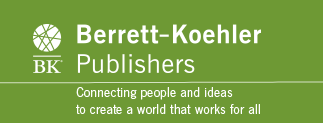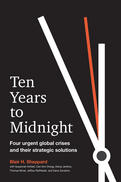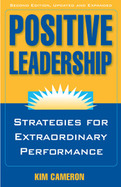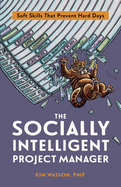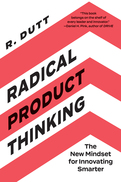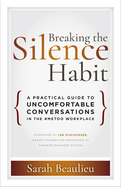—Harpal Singh, former Chair, Save the Children, India, and former Vice Chair, Save the Children International
In conversations with people all over the world, from government officials and business leaders to taxi drivers and schoolteachers, Blair Sheppard, global leader for strategy and leadership at PwC, discovered they all had surprisingly similar concerns. In this prescient and pragmatic book, he and his team sum up these concerns in what they call the ADAPT framework: Asymmetry of wealth; Disruption wrought by the unexpected and often problematic consequences of technology; Age disparities--stresses caused by very young or very old populations in developed and emerging countries; Polarization as a symptom of the breakdown in global and national consensus; and loss of Trust in the institutions that underpin and stabilize society. These concerns are in turn precipitating four crises: a crisis of prosperity, a crisis of technology, a crisis of institutional legitimacy, and a crisis of leadership.
Sheppard and his team analyze the complex roots of these crises--but they also offer solutions, albeit often seemingly counterintuitive ones. For example, in an era of globalization, we need to place a much greater emphasis on developing self-sustaining local economies. And as technology permeates our lives, we need computer scientists and engineers conversant with sociology and psychology and poets who can code. The authors argue persuasively that we have only a decade to make headway on these problems. But if we tackle them now, thoughtfully, imaginatively, creatively, and energetically, in ten years we could be looking at a dawn instead of darkness.
2012
Beyond Success
Positive Leadership shows how to reach beyond ordinary success to achieve extraordinary effectiveness, spectacular results, and what Kim Cameron calls “positively deviant performance”—performance far above the norm. Citing a wide range of research in organizational behavior, medical science, and psychology as well as real-world examples, Cameron shows that to achieve exceptional success, leaders must emphasize strengths rather than simply focus on weaknesses; foster virtuous actions such as compassion, gratitude, and forgiveness; encourage contribution goals in addition to achievement goals; and enable meaningfulness in work. In this concise, inspiring, and practical guide, Cameron describes four positive leadership strategies, lays out a proven process for implementing them, and includes a self-assessment instrument. This second edition has been updated throughout with new research findings and new ideas for implementing positive leadership.
-
By the coauthor of Developing Management Skills (over 250,000 copies sold)
-
Draws on cutting-edge researchnot anecdotal personal storiesto show how to achieve success that far exceeds expectations
-
Updated throughout with new research findings and new ideas for implementing positive leadership
Leadership should be about much more than hitting targets and avoiding mistakes. Kim Cameron shows how to reach beyond ordinary success to achieve extraordinary effectiveness, spectacular results, and what he calls "positively deviant performance"performance far above the norm. Positive leadership enables thriving and flourishing rather than simply addressing obstacles and impediments. It helps bring out the best in human nature.
Cameron is one of the founders of the new field of Positive Organizational Scholarship, which studies unusually high-performing organizations. In Positive Leadership he draws on discoveries in this field and in the allied field of positive psychologywhich focuses on high-functioning individualsas well as positive organizational change methodologies. He identifies four interrelated
leadership strategies:
- Positive Climate: fostering emotions such as optimism, compassion, and gratitude
- Positive Relationships: building positive energy networks and developing strength-based activities
- Positive Communications: fostering best-self feedback and supportive communication patterns
- Positive Meaning: helping people find profound purpose and a sense of calling
Cameron cites the empirical research that these strategies are rooted in and that supports their bottom-line effectiveness, lays out a proven process for implementing them, and includes a self-assessment instrument and a guide to assist leaders in the implementation process. Positive Leadership is a concise, thoroughly researched, and practical guide that any leader can use to generate truly amazing results.
Certainly, leaders need people skills, execution skills, a deep knowledge of industry trends, the ability to articulate a vision, and more—they must be competent—but that's just the tip of the iceberg. What's below the waterline? What's deep inside the best leaders that makes them different?
Mark Miller contends it is their leadership character. In his latest enlightening and entertaining business fable, he describes the five unique character traits exhibited by exceptional leaders and how to cultivate them.
The Heart of Leadership begins with young and ambitious Blake Brown being passed over for a desperately wanted promotion, despite an outstanding individual performance. Confused and frustrated, he turns to his former mentor, Debbie Brewster. Rather than attempting to solve Blake's problem for him, she sends him on a quest to meet with five of his late father's colleagues, each of whom holds a piece of the puzzle he's trying to solve.
As Blake puts the pieces together, he discovers that in the final analysis, a lack of skills isn't what holds most leaders back; skills are too easy to learn. Without demonstrated leadership character, however, a skill set will never be enough. Most often, when leaders fail to reach their full potential, it is an issue of the heart. This is Blake's ultimate revelation.
This book shows us that leadership needn't be the purview of the few—it is within reach for millions around the world. The Heart of Leadership is a road map for every person who desires to make a difference in the lives of others and become a leader people want to follow.
High-performing teams don't happen by magic. You need processes that are designed in a socially intelligent way if your team is going to overcome the modern world's tough challenges with coordination. To be a star project manager, you have to communicate with people in their individual learning styles, provide accountability in ways that won't be demotivating, and run meetings and minutes that people won't tune out. Your processes must be constructed in ways that respect the complex realities of social dynamics step by step.
You have to know your team before you can motivate them, and you have to motivate them before you can manage them. In this book are foolproof techniques to make sure your team connects with you, each other, and everyone they need to get the job done. After all, a team should be more than the sum of its parts—and it's up to the project manager to provide the glue that holds it all together.
Iteration rules product development, but it isn't enough to produce dramatic results. This book champions Radical Product Thinking, a systematic methodology for building visionary, game-changing products.
In the last decade, we've learned to harness the power of iteration to innovate faster—we've invested in a fast car, but our ability to set a clear destination and navigate to it hasn't kept up.
When we iterate without a clear vision or strategy, our products become bloated, fragmented, and driven by irrelevant metrics. They catch “product diseases” that often kill innovation.
Radical Product Thinking (RPT) gives organizations a repeatable model for building world-changing products. The key? Being vision-driven instead of iteration-led. R. Dutt guides readers through the five elements of the methodology (vision, strategy, prioritization, execution and measurement, and culture) to develop a clear process for translating vision into reality, and turning RPT skills into muscle memory.
This book offers refreshing solutions to the shortcomings of our current model for product development; be prepared to toss out everything you know about a good vision and learn how to measure progress to create revolutionary products. The best part? You don't have to be a natural-born visionary to produce extraordinary results.
In the wake of the #MeToo movement, employees and leaders are struggling with how to respond to the pervasiveness of sexual harassment. Most approaches simply emphasize knowing and complying with existing laws. But people need more than lists of dos and don'ts—they need to learn how to navigate this uncertain, emotionally charged terrain. Sarah Beaulieu provides a new skills-based approach to addressing sexual harassment prevention and response in the workplace, including using underdeveloped skills like empathy, situational awareness, boundary setting, and intervention.
Beaulieu outlines a five-part framework for having conversations about sexual harassment: Know the Facts; Feel Uncomfortable; Get Curious, Not Furious; See the Whole Picture; and Embrace Practical Questions. By embracing these conversations, we can break the cycle of avoidance and silence that makes our lives and workplaces feel volatile and unsafe. Grounded in storytelling, humor, and dozens of real-life scenarios, this book introduces the idea of uncomfortable conversation as the core skill required to enable everyone to bring their full talent and contributions to safe and respectful workplaces.
